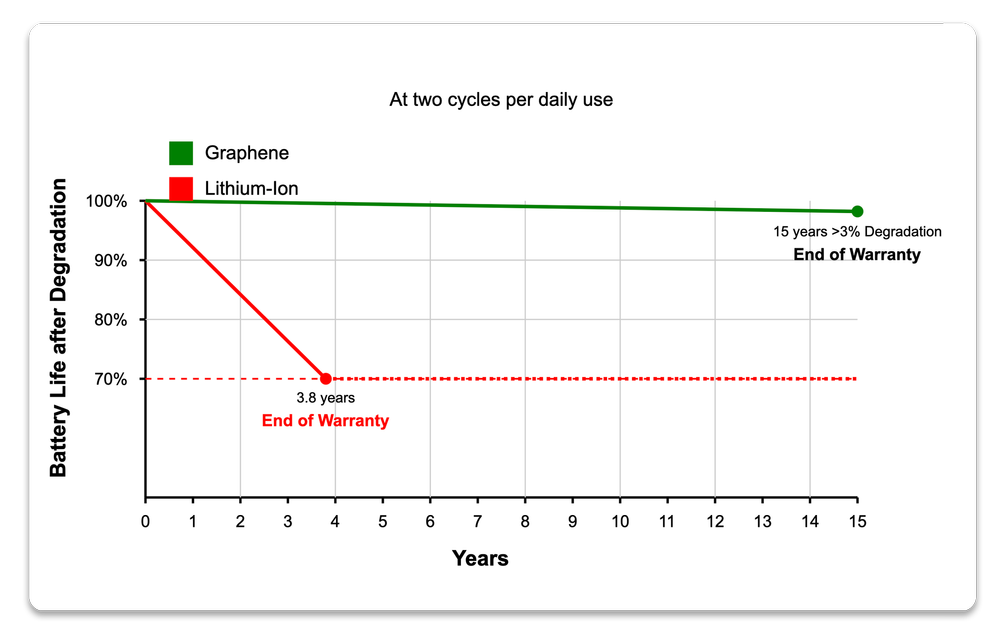
5 Surprising Benefits of Graphene Power Storage You Didn’t Know
Why Graphene Batteries Outperform Lithium-Ion in Every Critical Way
tj@civsav.com
Why Graphene Batteries Outperform Lithium-Ion in Every Critical Way
tj@civsav.com
You may know graphene for its strength and conductivity, but when it comes to energy storage, it offers unexpected advantages. Here are five features that go well beyond the usual battery conversation.
Most lithium batteries die after a few thousand cycles—but graphene delivers over half a million. For 24/7 operations like data centers or telecom, that reliability means less downtime and fewer replacements.

Graphene retains 97% of capacity after 15 years, while lithium-ion drops to 70% after just 3.8 years—the end of its typical warranty. Graphene’s minimal degradation over time sets a new benchmark for energy storage longevity.
Graphene’s architecture allows energy to come in and go out at the same time—perfect for systems needing uninterrupted operation during both charge and discharge phases.
Unlike lithium’s 20–30% buffer, graphene supports total discharge. That means more usable energy from every cycle, with no risk of irreversible damage.
Flammable electrolytes are a non-issue—graphene is solid-state and inherently non-combustible. Indoor farms, refrigerated warehouses, and hospitals benefit from this safety upgrade.
Withstand temperatures from -40 °F to 140 °F without derating. Ideal in harsh environments like farm fields, telecom poles, or industrial yards.
Graphene energy storage isn’t a minor upgrade—it’s a paradigm shift. Its exceptional endurance, safety, and versatility tackle real-world issues commercial and industrial sectors face daily.
